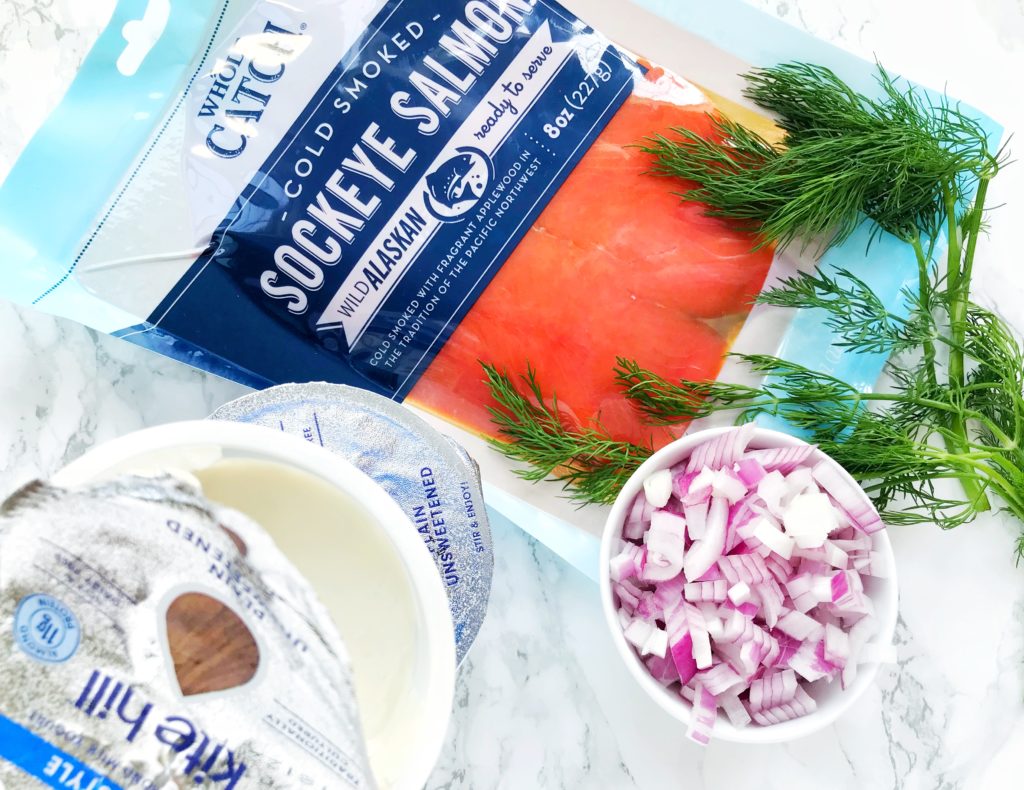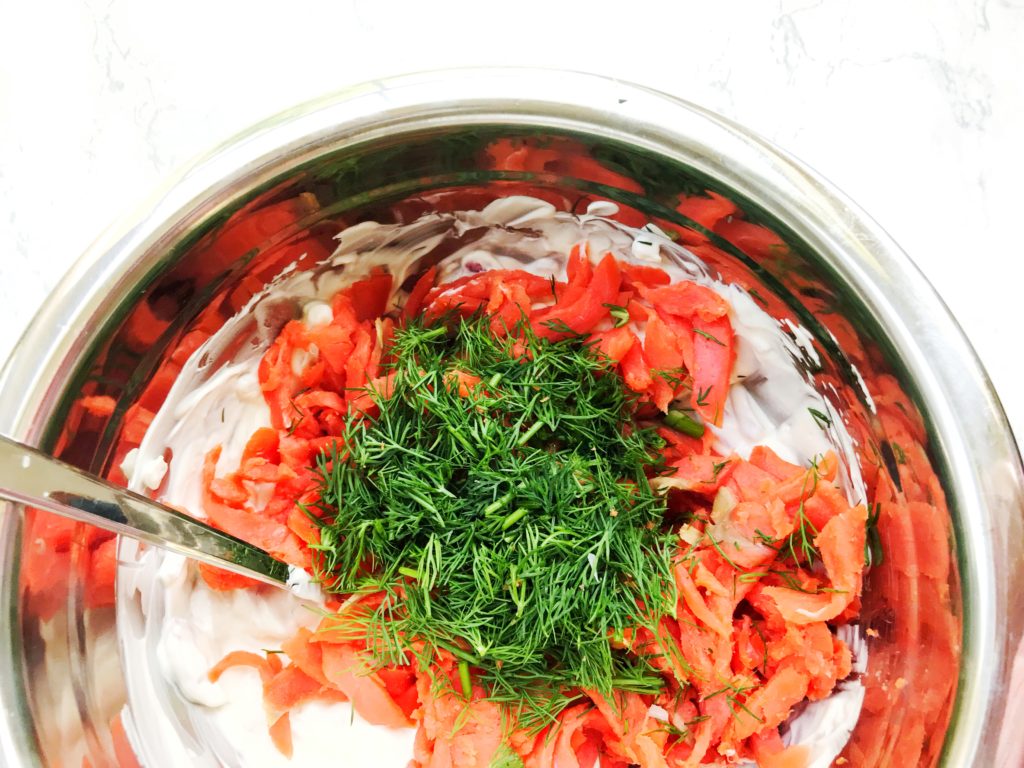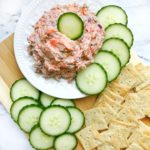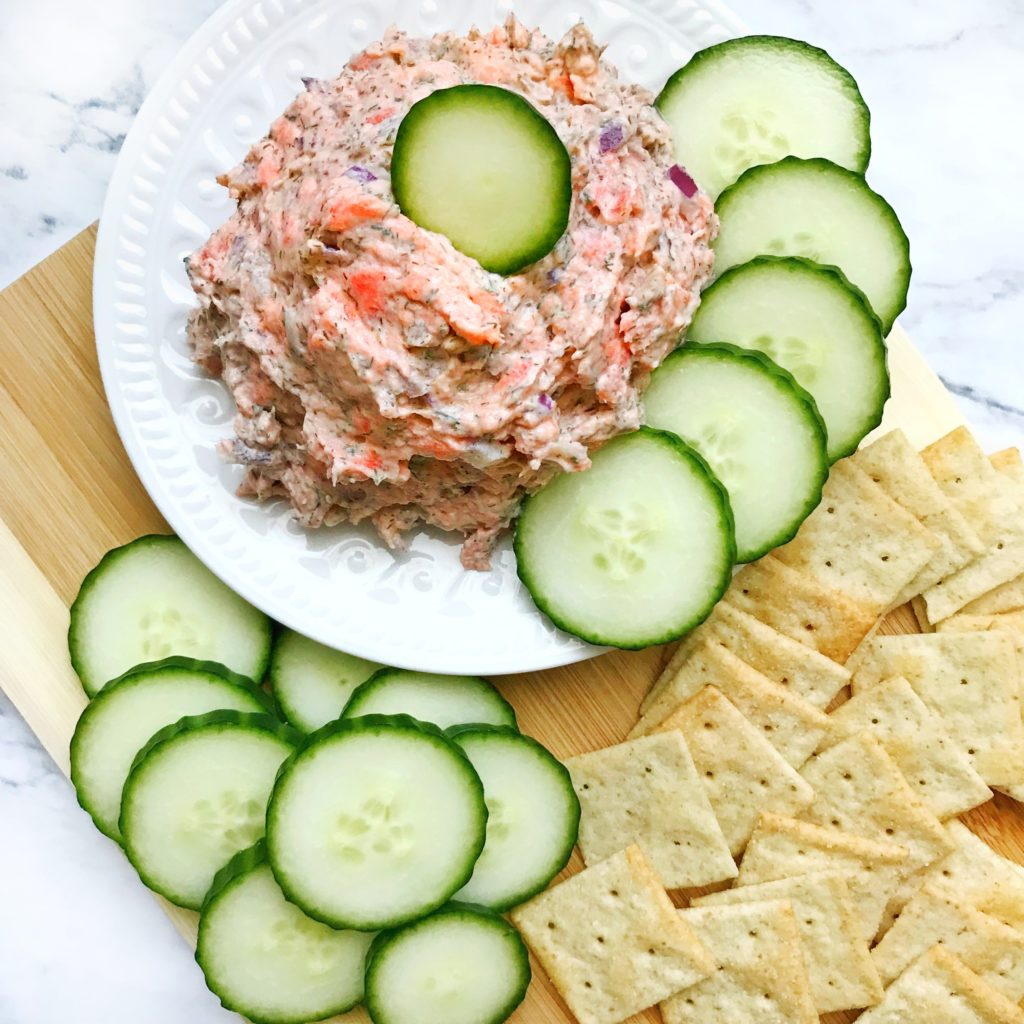welcome to the blog, let's
debunk the nutrition junk
When you find yourself hungry but with no time to cook. This overly simple yet tasty and delicious Salmon spread will help you calm your hunger! It’s heavily inspired by the original recipe from Sweden called Skagen Röra.
The main ingredient is typically dairy based but now with all the diary free options these days I decided to play around with the best one yet for cooking needs. Kite Hill’s newest plant based plain greek yogurt.

Salmon
Let’s talk about fatty fish and good, better, best of the different kinds that are available in stores. Let’s dive right in and look at the common names we will find for how fish are raised. There is conventional, farm raised, sustainably caught and wild-caught salmon. We will take a look at what each of these labels mean to allow you as a consumer to make your own decision!
Conventional/Farm-Raised
This typically means the fish have been farmed in underwater pens or aquacultures near the shoreline. Since they are close to the shoreline they are also at risk for being close to where a lot of runoff and toxins may be located. This leads me to discuss the fact that all fish are at risk for absorbing chemicals. The contaminants can come from their environment and the foods they eat. Poor fish farming practices can mean a poor diet for the fish as well. Common items in poor farming practices include a diet of soy, corn, animal by-products, antibiotics, and adding colorants to the fish to make it the pink color we expect in the grocery store. I would say if you do not have the budget for responsibly raised fresh fish then opt for responsibly/sustainably caught and canned fish products instead.
Sustainably-Caught/Responsibly Farmed
Although these fish are still farmed in the same types of underwater pens or aquacultures they usually have a standard to uphold when labeling “sustainable” and “responsibly farmed”. This is not to say that they are all equal unfortunately. Typically sustainable fish farming can provide quality, consistency, and a year-round supply of fish to consumers. Look for markets that have had their fish third party verified to ensure the fish sourced comes from environmentally responsible aquaculture. This will include standards of not using antibiotics, colorants, growth hormones, & animal by products in the fish feed. Whole Foods has a particular seal which upholds these types of criteria by utilizing the “responsibly farmed” blue seal on their packaging.
Wild-Caught
Finally, we have wild-caught fish which is all the rage currently. Since these bad boys are caught in the wild they are less likely to have the build up of contaminants. It is also good to note that they will typically have a different type of diet as compared to farmed fish. This gives them a different nutritional profile when compared to their counterparts. However, as the world population continues to grow these wild fish stocks are rapidly depleting. Many are saying that sustainably farmed fish are what will allow us to continue to eat fish. Otherwise we will see many species go extinct if all we continue to eat is wild-caught fish. Some stores like Whole Foods has information on the way they source their wild caught seafood as well to help you see if they utilize sustainable practices.

In conclusion, be aware of where the fish comes and how it is sourced. The best resource is the Monterey Bay Aquarium Seafood Watch App which can help you locate sustainable seafood. They have tons of resources for you to make educated consumer decisions when grocery shopping. At the end of the day the choice is yours which is why I gave you the run down of the different options. I believe it is always good to be well read on topics that we can directly impact as consumers!
Now let’s get to making the tastiest salmon spread you’ve ever made!
Simple Salmon Spread

Easy and simple salmon spread for those days you don’t feel like cooking.
- 1 Pkg Sustainable Smoked Salmon ((4 oz chopped))
- 1/4 Chopped Red Onion
- 1 Container Kite Hill Dairy Free Plain Greek Yogurt ((can also use plain greek yogurt if not lactose intolerant))
- 1 Pkg Fresh Dill
- 2 tsp Sir Kensington Spicy Brown Mustard
-
Chop all of the ingredients up to begin
-
Add the Greek Dairy Free Yogurt and Chopped Salmon to your bowl and mix.
-
Then add the rest of the ingredients and mix until well combined.
-
Now use either grain free Simple Mills crackers for a snack or spread it on some toast for a delicious lunch combo!
